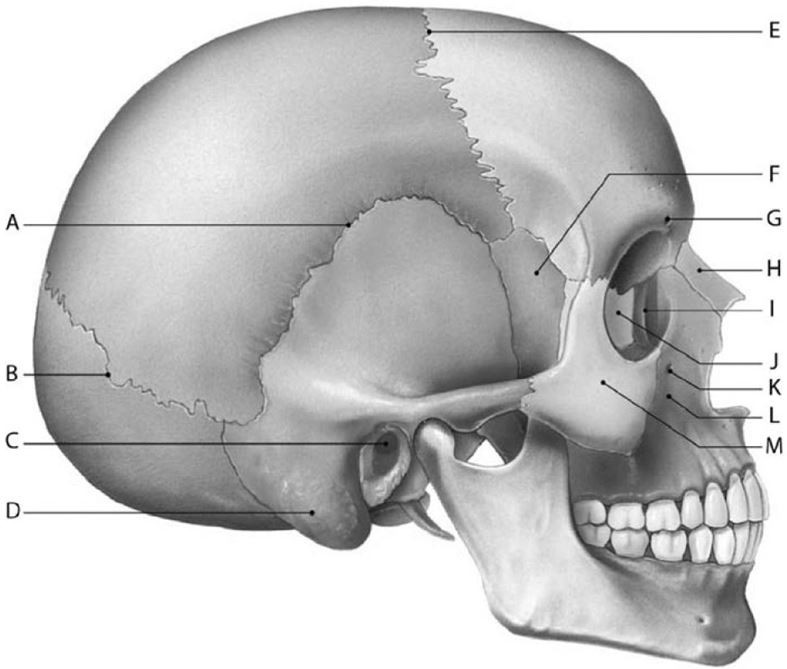The bone that articulates with the bone marked M to form the cheek is the

A) zygomatic.
B) temporal.
C) sphenoid.
D) maxilla.
E) lacrimal.
B) temporal.
You might also like to view...
Of the five cerebral lobes, the one not visible on the surface of the brain is the
A. occipital. B. frontal. C. insula. D. temporal. E. parietal.
The characteristic of the neuron plasmalemma that allows it to conduct impulses is called ________.
Fill in the blank(s) with the appropriate word(s).
_____ is a seizure disorder of the brain.?
A) ?Parkinson's disease B) ?Cerebral palsy C) ?Hydrocephalus D) ?Epilepsy
What effect would damage to the left postcentral gyrus produce?
A) Damage to the left postcentral gyrus would interfere with sensory information awareness from the right side of the body. B) Damage to the left postcentral gyrus would interfere with sensory information awareness from the left side of the body. C) Damage to the left postcentral gyrus would interfere with voluntary movement of the right side of the body. D) Damage to the left postcentral gyrus would interfere with voluntary movement of the left side of the body. E) Damage to the left postcentral gyrus would interfere with both sensory information awareness and voluntary movement of the left side of the body.